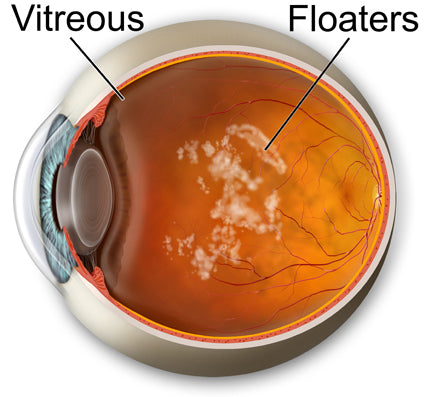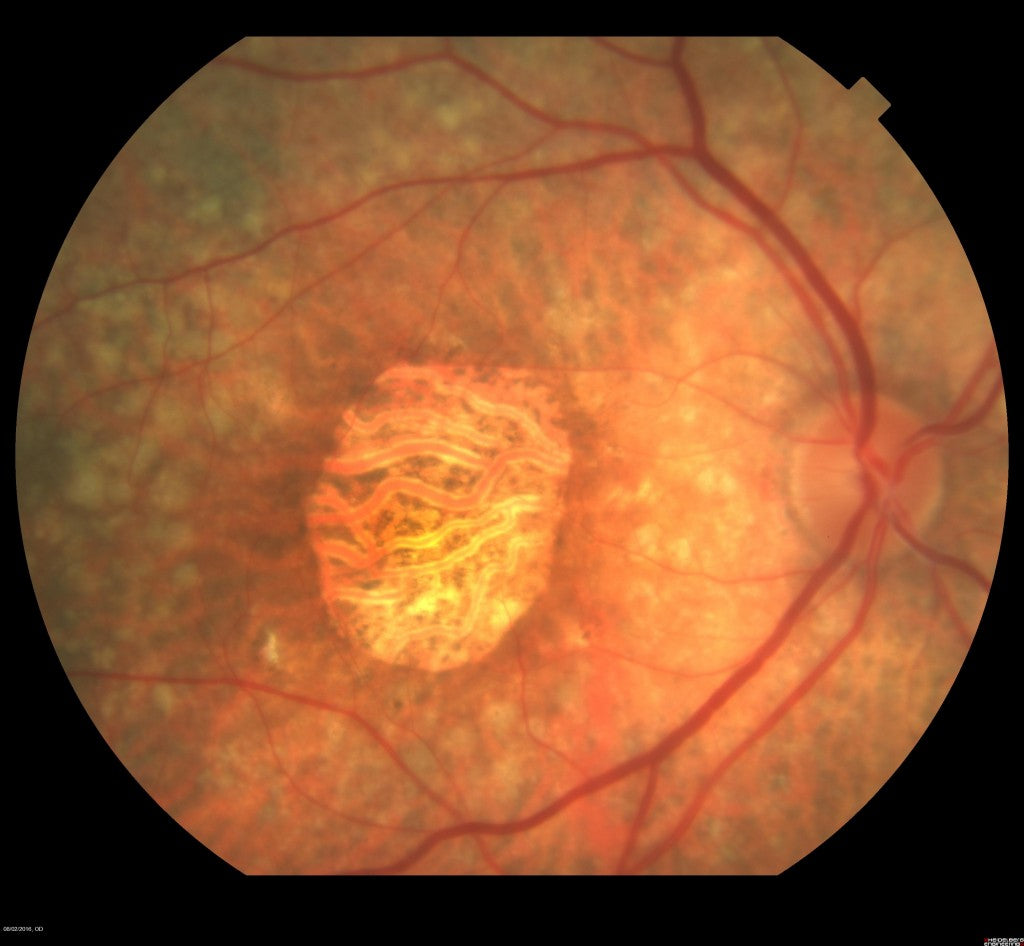The appearance of squiggles, clouds, strings, dark spots and random "cobweb" shapes that sometimes appear in the line of sight are "eye floaters" -- tiny bits of eye tissue debris that slowly drift through the vitreous humor (the clear gel that fills the eyeball). This floating debris most commonly forms as the vitreous humor's collagen and hyaluronic acid compounds liquify and break down over time. As the clumps of collagen protein cast shadows across the macula and distort light, eye floaters appear in the field of vision. Floaters are most noticeable when gazing at a blank space. Because floaters are suspended in the thick vitreous humor gel, attempting to shift focus to the floater itself only results in the debris appearing to drift slowly out of the field of vision.

Eye floaters are bothersome, but mostly harmless. However, for some individuals the distracting annoyance of eye floaters can become a significant quality of life issue -- interfering with activities like reading, watching television or driving. One recent study published in the American Journal of Ophthalmology found that some eye floater sufferers rated their quality of life to be worse than those with glaucoma and diabetic retinopathy, and about equal to those with age related macular degeneration. The research also revealed that sufferers expressed willingness to try relatively risky or unproven procedures that might rid them of eye floater symptoms -- further reflecting the frustration and desperation that is sometimes reported by eye floater sufferers.
Contributing Factors to Eye Floaters
Age: With advancing age, eye floaters become more common -- especially after age 50. Around this time, the vitreous humor starts to dehydrate and shrink, forming floater clumps and strings.Eye health issues: Floaters can manifest after eye infections, macular edema and cataract surgery. Diabetic retinopathy and vitreous hemorrhage also cause floaters from the shadows cast by the blood. Floaters seem to be more common in individuals with nearsightedness, as they have a greater risk of posterior vitreous detachment. Any eye trauma that dislodges tissue from the retina and sends it adrift in the vitreous humor may also cause floaters.
Tear film abnormalities: Although not true eye floaters, dust and makeup debris in the eyes' tear film may cast shadows across the macula that closely mimic the appearance of floaters. Dry eye, allergies and foreign substances may cause tear film abnormalities and floater symptoms.
Posterior vitreous detachment (PVD): The vitreous humor attaches to the retina with tiny fibers that can snap and break off as the vitreous humor shrinks with age. These collagen fibers may drift into the line of sight, casting shadows on the retina and leading to floater symptoms. An unexpected increase in the number of floaters may indicate PVD.
Retinal detachment: Sudden and severe eye floater symptoms accompanied by bright vision flashes and loss of peripheral vision may be a sign of retinal detachment or a retinal tear. These are medical emergencies that require immediate attention.
General health issues: Diabetes, high blood pressure and migraine headaches have all been implicated in the onset of eye floater symptoms.
Managing Eye Floater Symptoms
Accept the condition: Since floaters are considered harmless, some eye health professionals advise their patients to live with the condition.
Wait and see: As floaters are harmless, eye health professionals sometimes advise patients to simply wait for the floaters to disappear. Over time, eye floaters eventually settle to the bottom of the eye. However, new floaters can form as old ones fade away.
Eye surgery: By draining the eye of floater-cluttered vitreous humor and replacing it with saline, clear line-of-sight vision may be restored. This type of invasive eye surgery -- called vitrectomy -- can be risky and expensive, and is usually reserved for extreme eye floater cases. YAG laser vitreolysis is another rarely-performed surgery that carries some risk, in which a laser blasts floater debris until it becomes smaller particles that may reduce symptoms.
Nutritional supplementation: Nutrition is a conservative self-care approach to managing eye floater symptoms. Effective nutrient support for eye floaters include omega-3 fatty acids, phospholipids and curcumin from natural turmeric. These nutrients modulate tear gland irritation, optimize tear film clarity and stabilize eye structures that are essential for clear vision -- all biological actions that may assist with eye floater symptoms.














